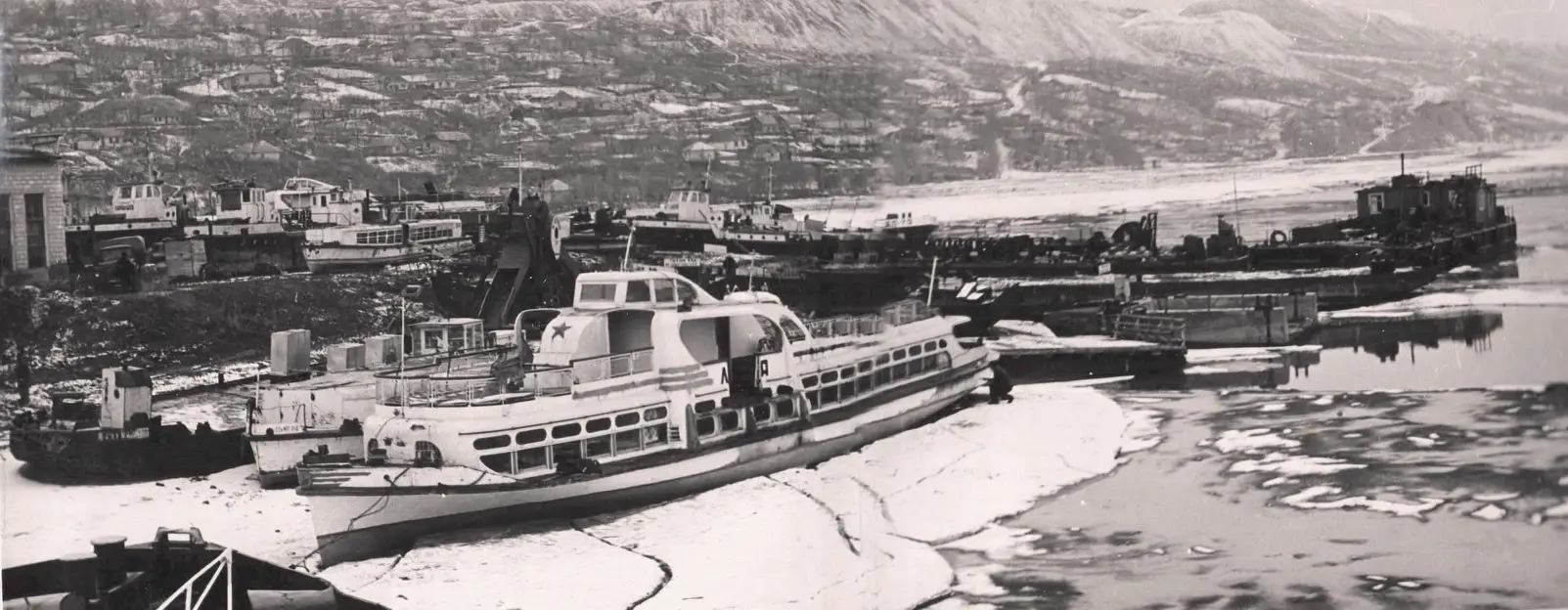
The Ribnita River Port began its operation on March 21, 1944, initially as a pier, and by the 1950s it had obtained port status. It was a major transport and trade hub, connecting both banks of the Dniester River.
During the Soviet era, the workforce numbered around 360-380 people. The port’s main activities included cargo and passenger transportation as well as dredging operations. The primary focus was on extracting sand and gravel mixture (PGS) from the bottom of the Dniester River using floating cranes.
The port held leading positions in the extraction and processing of PGS, with an annual volume of 1-1.2 million tons. PGS was in high demand both within the Moldavian SSR and beyond. In 1952, the port’s equipment participated in the construction of the Dubossary Hydroelectric Power Station.
Passenger vessels operated on routes such as “Ribnita — Dubossary — Ribnita” and “Ribnita — Kamenka — Ribnita”. In addition to gravel, sand, and gravel, they also transported wine, fruits, and vegetables.
The port had about 3 passenger ships, 3 floating cranes, 2 icebreakers, tugboats, and small boats at its disposal. The port also had a railway branch for loading sand onto transport.
Since 1991 and the dissolution of the Soviet Union, the Ribnita River Port continues its operations, adapting to new economic conditions. Today, the port actively collaborates with local and international partners, providing a wide range of services in river transport, including ship towing, passenger transportation, and material extraction.
Currently, the Ribnita River Port remains a key player in the regional economy, striving not only to maintain but also to strengthen its market position. We take pride in our heritage and achievements, continuing to develop in accordance with modern standards and customer needs.
For more detailed information about our services, please visit the “Services” page.
Best regards,
The Administration of Ribnita River Port